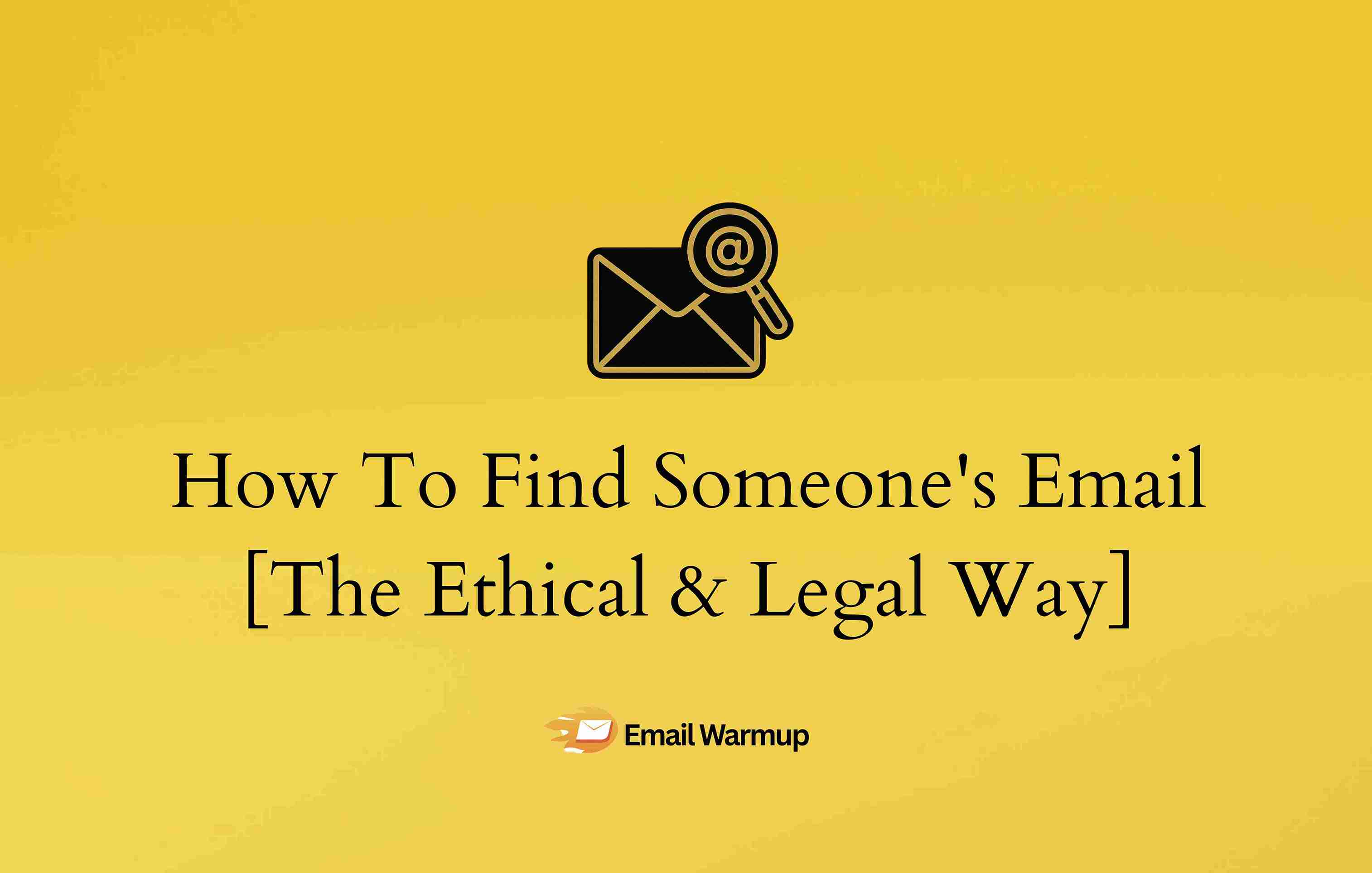
Every day, thousands of professionals guess at email addresses, hoping their message lands in the right inbox.
Most fail spectacularly.
80% of cold outreach efforts fail before you even click ‘send’ because you don’t have the right email address. But what if you could skip the guesswork entirely and reach the exact person you need every single time?
As a marketing and email deliverability consultant who has helped countless businesses execute successful campaigns over a decade, I’ve prepped this guide to unfold:
- How to find anyone’s email address
- How to make sure it’s ethically & legally right
- Advanced tools that help you find email addresses
- How to avoid sketchy tactics that put everyone at risk
Let’s dive in and see it for ourselves.
A word of advice
Want to find a way to boost inbound lead generation by finding emails?
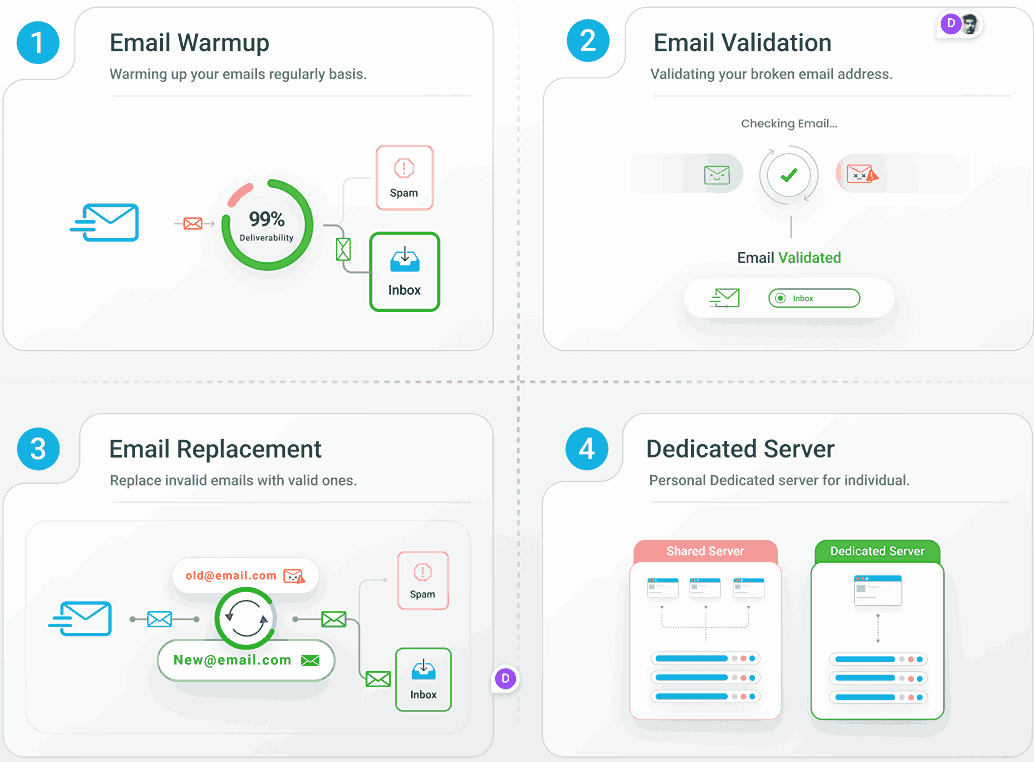
EmailWarmup.com is the ultimate unfair advantage, designed to get you valid emails of potential, interested customers:
Find hidden visitors
EmailWarmup.com lets you see all your anonymous website visitors who bounce away without filling out the form.
Automated multi-channel follow-ups
It ensures no prospect is ever left behind, across calls, texts, and emails.
AI appointment setter
No matter the time or day, if someone fills your contact form, EmailWarmup.com calls (with AI) on your behalf, takes all the details, and schedules an appointment before your competitor does.
Leads sent straight to your CRM
Once we have the first contact, EmailWarmup.com sends all the leads, along with call recordings and summaries, straight to your CRM.
Impressive, isn’t it? You can see it with a free trial (no strings attached)
First, let’s tell you what NOT to do
Even with the right tools, it’s shockingly easy to sabotage your email-hunting efforts. These mistakes can damage your sender’s reputation and close doors before they open.
1. Settling for generic email addresses
When you’re in a rush, it’s tempting to grab the first visible email addresses like:
- info@
- contact@
- support@
The problem is that these addresses rarely reach decision-makers. Messages get filtered, ignored, or lost in corporate black holes.
Hence, you should always hunt for personal, role-specific emails when you need direct communication.
Generic addresses are dead ends disguised as shortcuts.
2. Skipping email verification
Tools that “find” emails don’t always confirm they actually exist.
Sending to unverified addresses creates bounces, and repeated bounces flag your domain as spam.
As a result, your future emails land in spam folders automatically.
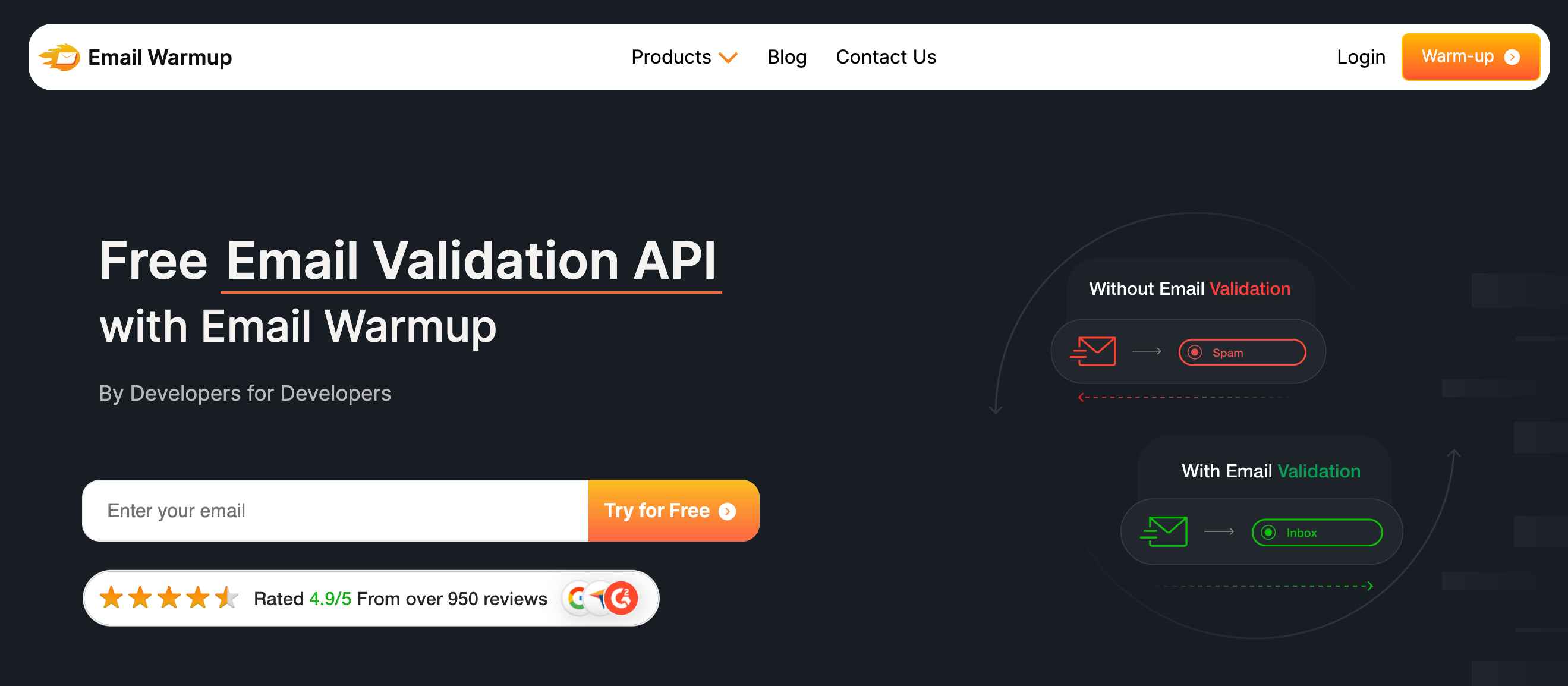
Use an email validation API to confirm every address is active before sending, as one verification saves your entire sender reputation.
Moreover, you could use EmailWarmup.com, which allows you to not only validate the current emails in your list but also fetch the correct ones for each invalid address you have in there.
3. Ignoring domain accuracy
A single typo in the domain sends your message into a void.
If you’re guessing formats like jane.smith@companyname.com, double-check that the domain spelling matches the actual business website.
For example, assuming company.com when it’s actually companyinc.com or thecompany.com.
That’s why you should always verify domain spelling against the official website.
4. Sending cookie-cutter messages
Finding the right email means nothing if you send generic garbage.
Cold emails that scream “mass blast” trigger spam filters and get deleted instantly.
You could mention something specific — a recent post, mutual connection, or company milestone (showing your message isn’t random spam).
As a result, you get higher open rates, better responses, and actual conversations.
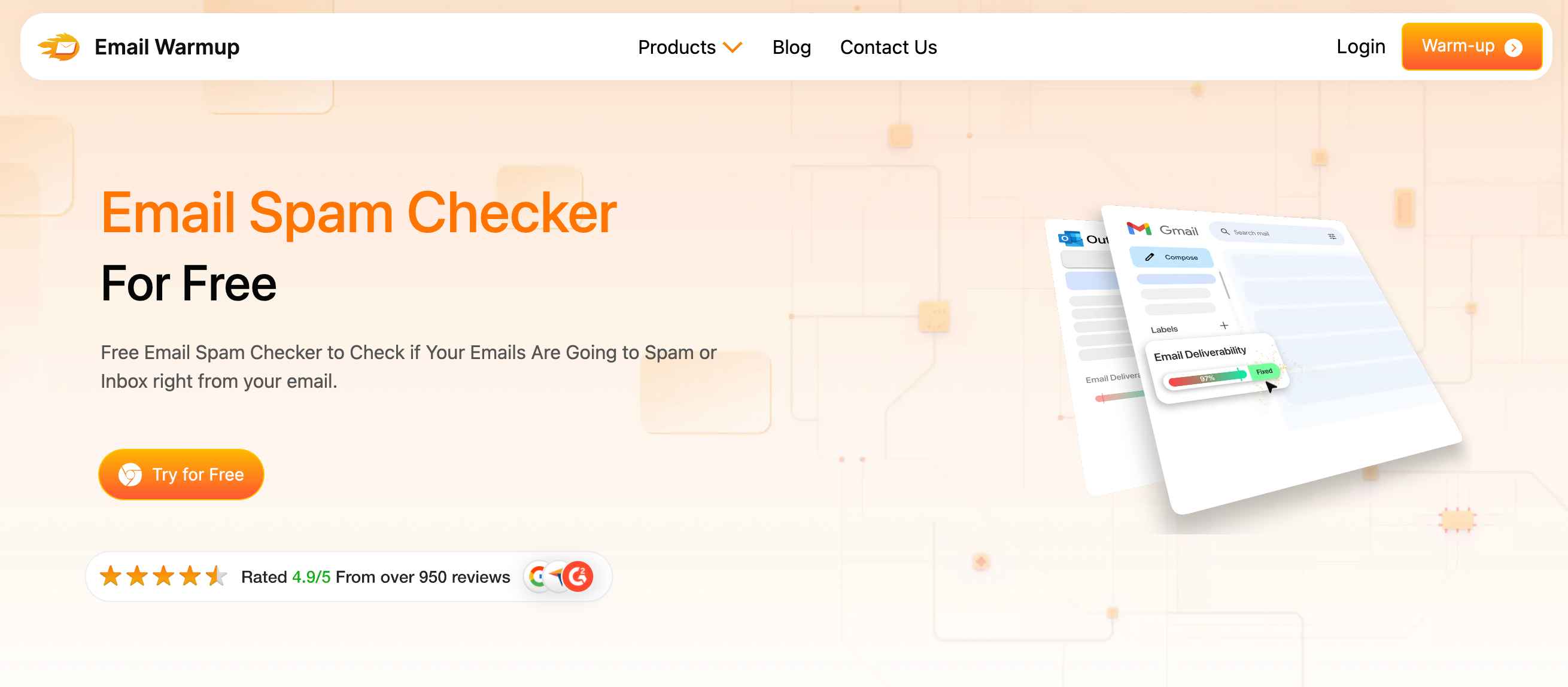
You can also check your email draft against an email spam checker that will tell you if your write-up actually triggers any spam filters.
Top methods to find someone’s email
Here are some battle-tested strategies that save time, protect your reputation, and actually get replies.
1. Using LinkedIn to uncover hidden emails
LinkedIn is a goldmine — if you know where to dig. Most people scroll through profiles and miss the clues that lead to working email addresses. Here’s how you find emails from LinkedIn
Start with contact info
Click the “Contact Info” button on any profile. If you’re lucky, the email appears immediately. If not, you might find:
- Social media handles with bio emails
- Personal domains (like janesmith.me)
- Website links leading to contact forms
Even partial information gives you something to work with.
Decode job titles and company domains
LinkedIn provides three crucial pieces of information: name, role, and company. From that trinity, create educated guesses:
- jane.smith@company.com
- jsmith@company.com
- jane@company.com
This works especially well with smaller businesses where emails aren’t hidden behind corporate firewalls.
2. Guess email addresses strategically
Guessing isn’t dumb when done intelligently (even though there are risks involved).
Yet, combined with logic, formatting knowledge, and verification tools, email guessing becomes a precise strategy.
Master corporate email formats
Most companies follow predictable patterns. Start with these combinations:
- firstname@company.com
- f.lastname@company.com
- firstinitiallastname@company.com
- firstname.lastname@company.com
If you know the name and domain, you’ve solved 80% of the puzzle.
Test every guess
Never send outreach to unverified addresses. Bounced emails can:
- Trigger spam filters
- Blacklist your domain
- Damage your sender’s reputation
Always use a tool like EmailWarmup.com to verify addresses so that your emails don’t bounce.
Combine multiple intelligence sources
Cross-reference LinkedIn profiles with:
- Speaking bios
- Public blog posts
- Company directories
Look for subtle clues, like:
- Do they use middle initials?
- Do they go by “Jonathan” or “Jon”?
- Do they have any other link that gives us a clue?
These details help you dial in the most likely address format.
3. From the website and contact page
The easiest answers often hide in plain sight. Before diving into complex detective work, check where people actually want to be contacted.
Explore website footers
Company emails for support, sales, or press inquiries typically live in the footer. Scroll down and scan for direct contact details.
Check team and about pages
Small businesses, agencies, and solo consultants often list personal emails with team bios. Even contact forms sometimes reveal backend details or autoresponder addresses.
Scan blog author bios
Blog sections frequently include author contact information. Even partial details like a first name or domain fragment are enough to help guess correctly.
Review source code
Right-click any contact page and select “View Page Source.” Some sites embed emails in the code to avoid spam bots. Use Ctrl + F to search for “@” symbols in the source code. You might uncover hidden contact details.
4. Using advanced email finder tools
Most email lookup tools promise miracles but deliver disappointment. They guess wildly and leave you with bounced emails and broken trust.
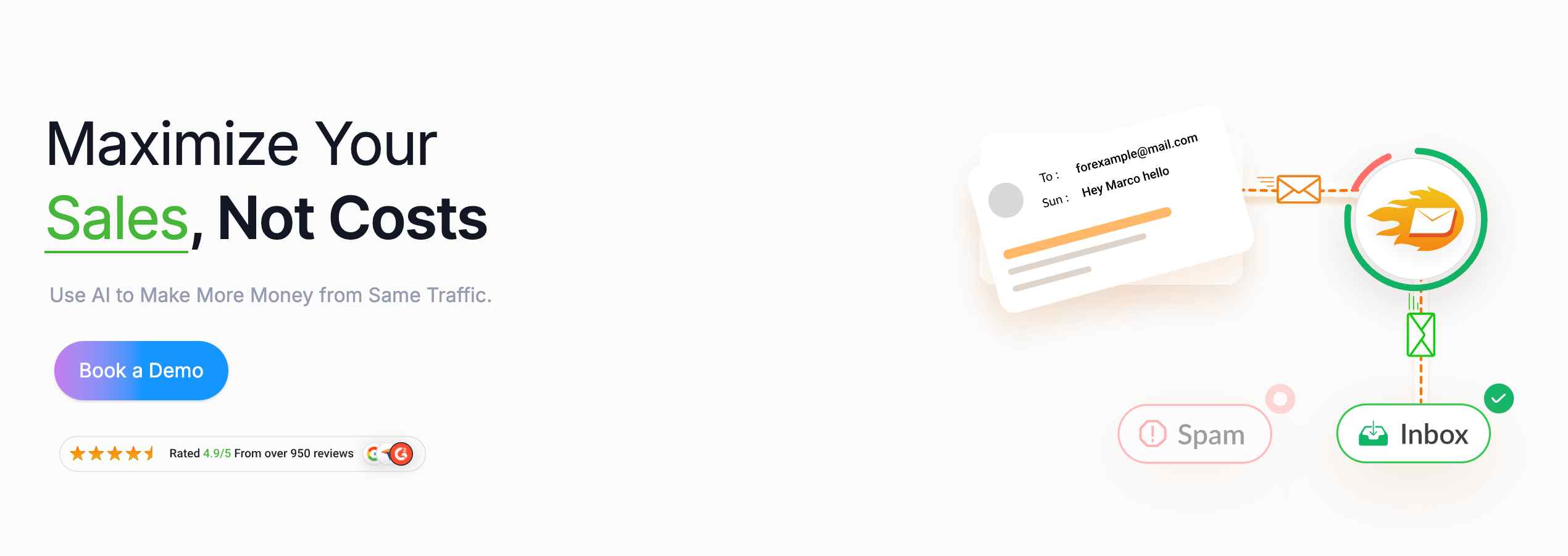
However, EmailWarmup.com takes a different approach. It has sophisticated AI systems in place that accurately bring you exactly what you need:
Identify anonymous website visitors
EmailWarmup.com operates silently in the background, tracking who visits your site, even when they leave without filling out a contact form. Using behavioral data and web fingerprinting, it reveals:
- Who they are
- Their verified email address
- What company do they represent
The best part is that it achieves this with unmatched accuracy.
So no more wondering about that visitor from San Diego who spent eight minutes on your pricing page.
EmailWarmup.com knows exactly who they are, and it will help you make sense of all the traffic hitting your website under Google Analytics.
Convert instantly with AI
EmailWarmup.com doesn’t stop at finding emails.
It offers an AI appointment setter that calls hot leads within seconds and books them directly into your calendar.
And that happens outside working hours too, even on a Saturday at 3 AM.
So not only are you collecting essential contacts that you can convert, but you are also enjoying the privilege of being “available” to your customers without working over the clock.
Deliver verified emails to your CRM
Once EmailWarmup.com identifies a lead, it contacts it via an AI caller and sets up an appointment (and takes essential details from the lead).
Then it automatically pushes their information, which includes working email addresses, call transcripts, and other details, into your CRM. As a result, you enjoy:
- No time wasted on lookups
- No bloated spreadsheets to manage
- Just inbox-ready emails that won’t bounce
- No more going down the rabbit hole only to find nothing
It saves you from the manual legwork that might lead to a dead end.
5. Search engine strategies
Google is more than what people consider it to be. Beyond a search engine, it’s a precision instrument when you know how to use it.
Strategic queries can uncover email addresses buried in documents, profiles, and event listings.
Master Boolean operators
Use quotation marks for exact matches:
“John Doe” + “company name” + “@”
“Jane Smith” + “email” + “contact”
This narrows results to pages likely containing actual email addresses.
Target specific domains
Use the ‘site:’ operator to search within particular platforms:
site:linkedin.com “john.doe@email.com”
site:example.com “contact”
This filters results to one domain and reveals indexed profiles or hidden pages.
Search document types
Professional documents like whitepapers, resumes, and presentation slides often include contact information:
“John Doe” + “company” filetype:pdf
“Jane Smith” + “speaker bio” filetype:ppt
Combine for precision
Stack multiple operators for laser-focused results:
“firstname lastname” + “company” + “contact” + site:slideshare.net filetype:pdf
You’re not just searching — you’re tracking digital fingerprints across the web.
6. Social media email discovery
Social platforms can also help you discover valid emails for the customers you’re looking to add in your list.
You can use Instagram to find email addresses by looking at the following:
- Bio sections: Many creators drop emails directly in their bio
- Story highlights: Check saved highlights labeled “Contact” or “Info”
- Link-in-bio tools: Explore Linktree or Carrd pages for contact details
Twitter/X profiles
You can use Twitter/X to find email addresses by looking at the following:
- Bio text: Scan profile descriptions for email addresses
- Pinned tweets: Often contain contact information for business inquiries
- Header images: Some professionals include emails in their header graphics
Facebook pages
You can use Facebook pages to find email addresses by looking at the following:
- About sections: Business pages frequently list public contact emails
- Contact buttons: May reveal email addresses or lead to contact forms
- Post interactions: Check comment threads where users sometimes share contact details
YouTube channels
You can use YouTube channels to find email addresses by looking at the following:
- Channel descriptions: Business inquiry emails often appear in the “About” section
- Video descriptions: Some creators include contact information in video details
- Community posts: Look for collaboration or contact announcements
Legal and ethical considerations with email hunting
Finding someone’s email is legal when done correctly. Understanding the boundaries protects you and respects others’ privacy.
Here’s what’s legally acceptable:
- If someone lists their email on a website, blog, or social media profile, you can contact them.
- Sending one personalized message with a clear business purpose is acceptable.
- Always identify yourself and explain why you’re reaching out.
Here’s what’s a no-go:
- Don’t trick people into revealing their email addresses.
- Avoid tools that bypass login walls or access private information.
- Bulk messaging without consent violates laws like CAN-SPAM (U.S.) and GDPR (EU).
Here are some best practices:
- Be respectful (act like a human, not a spam bot).
- One follow-up is professional; five follow-ups are harassment.
- Always provide a way for recipients to opt out of future contact.
Boost your email hunting + validation + deliverability with EmailWarmup.com
Manually searching for emails and guessing takes hours. Most free methods are hit-or-miss. And sending emails that bounce can kill your email deliverability.
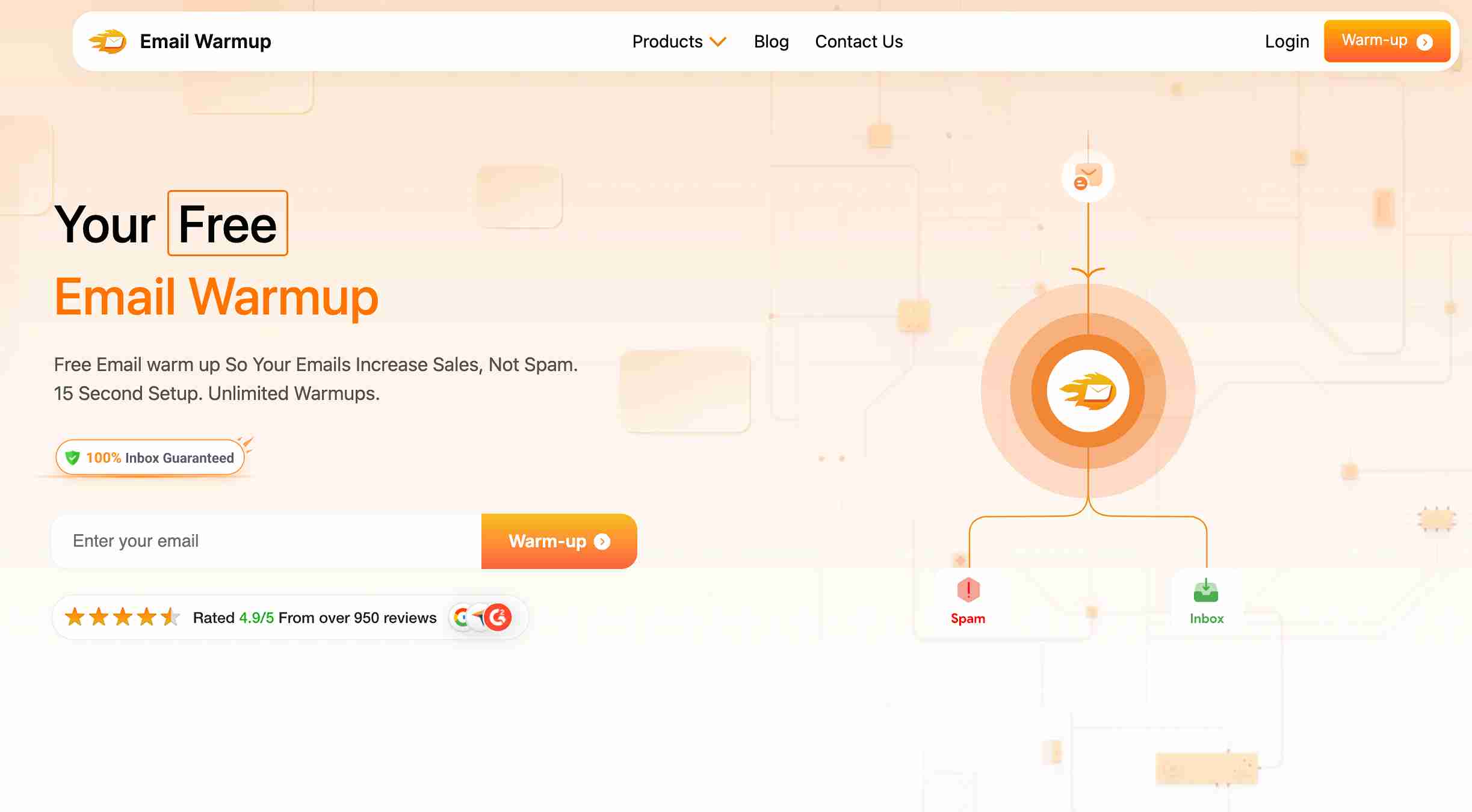
Here’s a smarter approach:
EmailWarmup.com eliminates the guesswork:
- Delivers verified contacts directly to your CRM
- Boosts deliverability with unlimited email warmup
- Identifies real leads even when they never fill forms
- Books meetings using AI-powered appointment setting
- Automatically finds and verifies their actual email addresses
Want to see how it works? Sign up for a free (no-strings-attached) trial.
A glossary of known email discovery terms
If you are new to email hunting, these terms may sound technical, but understanding them can transform guesswork into a strategy.
| Term | Definition |
| SMTP (Simple Mail Transfer Protocol) | The standard protocol for sending emails. Email verification tools use SMTP “ping” to check if an address exists without sending an email. |
| Email Permutation | Guessing email formats using common patterns like first.last@domain.com, f.last@domain.com, etc. |
| Boolean Operators | Special words and symbols (AND, OR, “”, +) used to refine search engine queries when finding emails. Example: “John Smith” + email + site:linkedin.com |
| Bounced Email | An email that couldn’t be delivered and is returned to the sender. Frequent bounces damage your sender reputation. |
| Lead Enrichment | Supplementing a contact with additional info like job title, company size, or LinkedIn profile. Helps with targeting and personalization. |
| Email Verification | Checking if an email address is valid and active before sending. Prevents bounces and maintains sender reputation. |
| Sender Reputation | A score used by email providers to judge your domain’s trustworthiness. Affects whether your emails land in inbox or spam. |
| Catch-All Domain | A domain that accepts all emails sent to it, even if the address doesn’t exist. Makes email verification tricky. |
| MX Records (Mail Exchange Records) | DNS records that direct emails to the correct server. Used by tools to validate whether a domain can receive email. |
| Email Scraping | Collecting email addresses from public sources like websites or forums using automated tools. Risky if done without consent. |
| Disposable Email | Temporary email addresses used to avoid spam. Not suitable for outreach. Tools often flag these during verification. |
| LinkedIn X-Ray Search | A technique using Google to find LinkedIn profiles outside the platform. Example: site:linkedin.com/in “Marketing Director” “Acme Corp” |
| Email Regex (Regular Expressions) | A pattern used by tools and devs to identify strings that resemble email addresses. Often used in scraping and validation scripts. |
| Role-Based Emails | Generic inboxes like info@, sales@, or support@. Often avoided in personalized outreach as they may not go to a specific person. |
| First-Touch Email | The initial outreach email sent to a lead. Crafting it well is crucial for replies and conversion. |
| Spam Trap | Email addresses are set up to catch spammers. Sending to them can damage your sender reputation. Often triggered by scraping or outdated lists. |
Frequently asked questions about email hunting
Here are some commonly asked questions about this topic:
Yes, you can use free approaches like Google searches, LinkedIn exploration, social media investigation, or educated guessing based on domain patterns. However, these methods require significant time investment and don’t guarantee accuracy.
Use advanced search operators like site:domain.com “name” + email or search specific file types (PDFs, resumes) that might contain multiple email mentions. Try various name-domain combinations and verify each one.
Check their bio, story highlights, or link-in-bio tools like Linktree. Many creators and freelancers display their email directly for business inquiries. Some hide it creatively with spaces or emojis.
Yes, if it’s publicly shared. Avoid scraping private databases or using deceptive methods. Always respect privacy laws, such as GDPR, and include opt-out options in your outreach.



